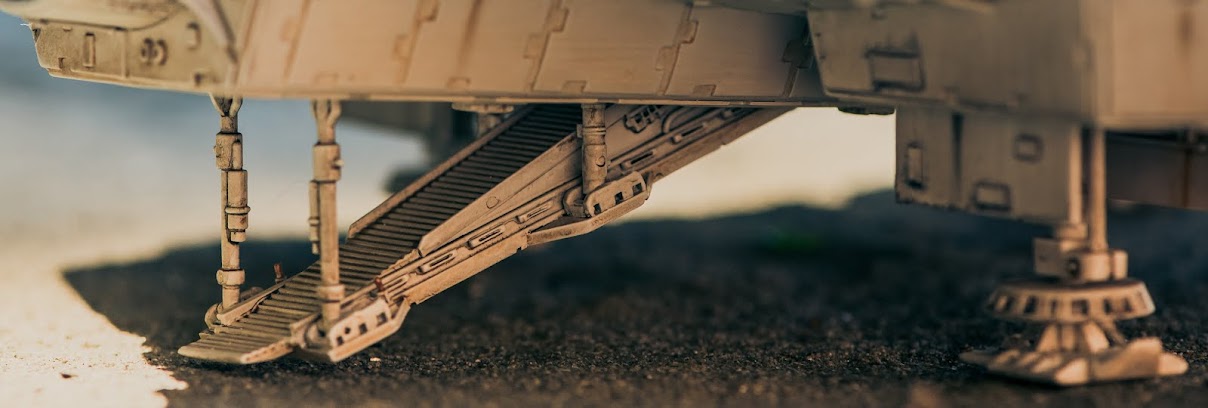The method for molding and casting small parts is to build your mold so the object is cast from the bottom up. A common problem with casting from molds is trapped air. If you built a mold with only one hole in the top, the casting material could block the escape of any air, leaving the bottom half of you mold empty. You would then only have half a cast.
This diagram should explain the idea of casting from the bottom up:
This is what the finished mold would look like. Your casting material would be poured into the funnel, it would flow to the bottom of the filler tube then start to level out as it rises through the void left by the original part. Air would be pushed up and out through the air vent as the casting material rises.
These are the parts I plan to copy. The largest part is 14mm x 7mm, and the smallest is only 5mm x 2.5mm.
I started by gluing each part to some thin strips of styrene. These will act as channels for the casting material to run through and for air to escape out the top.
It all looks a bit sloppy but it will do the trick. There are 3 pour holes and 6 air vents.
I've placed the parts on a bed of Plasticine and surrounded it with LEGO. I saw the acorn nut idea in a Smooth-On catalog.
You'll see what these are for later. You may have noticed my air vents don't go to the top, well, they should. I cut them too short so I'll have cut them longer with an x-acto after the 2 mold halves are done.
It is VERY IMPORTANT to use a plasticine that is compatible with the rubber you are using. Some plasticines have chemicals that can inhibit the curing of the rubber. So always test your materials before making your mold.
I'm using Smooth-On
OOMOO 25, which I found to be too soft. It has a shore hardness of 25 and I would have preferred something a bit harder.
What's Shore Hardness?
After a few hours in my pressure tank I have removed the mold and carefully separated it from the Plasticine. I've placed it facing up into a box of LEGO. I also cleaned up this side of the mold by removing any stray rubber that found it's way under the parts. This side of the parts should be clean and free of any rubber.
A few light coats of mold release and we're ready to pour the second half of the mold.
A previous mold of mine failed when I used the wrong type of mold release. I had to cut my original out with an x-acto knife. I found this release to be the correct one to use on Silicone molds.
You can now see both halves of the mold and why I stuck a bunch of acorn nuts on my first half. They will act as registration marks and will make it possible to line the mold halves up perfectly every time. And don't scrimp on acorn nuts the more the better if you have room.
A piece of cardboard on each side and some rubber bands will hold your mold together.
I poured some Smooth cast 300 into the mold until I could see it rise up out of the vent holes. The mold was then placed in the pressure tank at 60 pounds pressure for an hour. The Smooth Cast 300 has a very low viscocity (80 cps) allowing it to flow easily into small spaces.
What's Viscocity?
Once the parts have set, the two halves of the mold are separated revealing the cast parts. Usually the first cast will reveal any flaws like a blocked vent or a spot where air gets trapped. You can fix these problems by cutting a new vent with an x-acto knife.
After a wee bit of cleaning up, the cast parts (in white) are displayed next to their original parts.
What might I do differently next time?
- I would use a stiffer rubber. A stiffer rubber would not deform as easily as a soft rubber would.
- I would add small dowels or rods of styrene to the bottoms of the parts I intend to cast rather than glue them along a styrene strip like I did for this set. This would make it easier and neater to cut the cast part free from the sprue.
- I found getting my set of parts to lay flat on the bed of plasticine tricky. I kept having voids under the parts. I intend to buy a noodle maker which will help me roll nice flat sheets of plasticine. I may also try laying each part on the bed of plasticine before I connect them all together.
- I might try to re-use an old sprue from a model plane or tank and attach my parts to that instead of making my own.
- Use round styrene instead of square for my channels. I could bend them so the casting material flows better.
 |
| A noodle maker |














